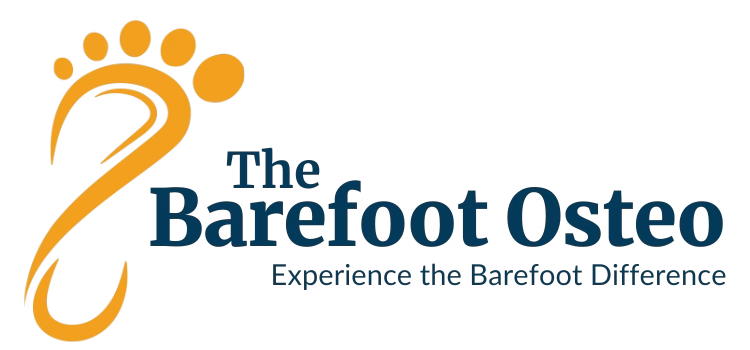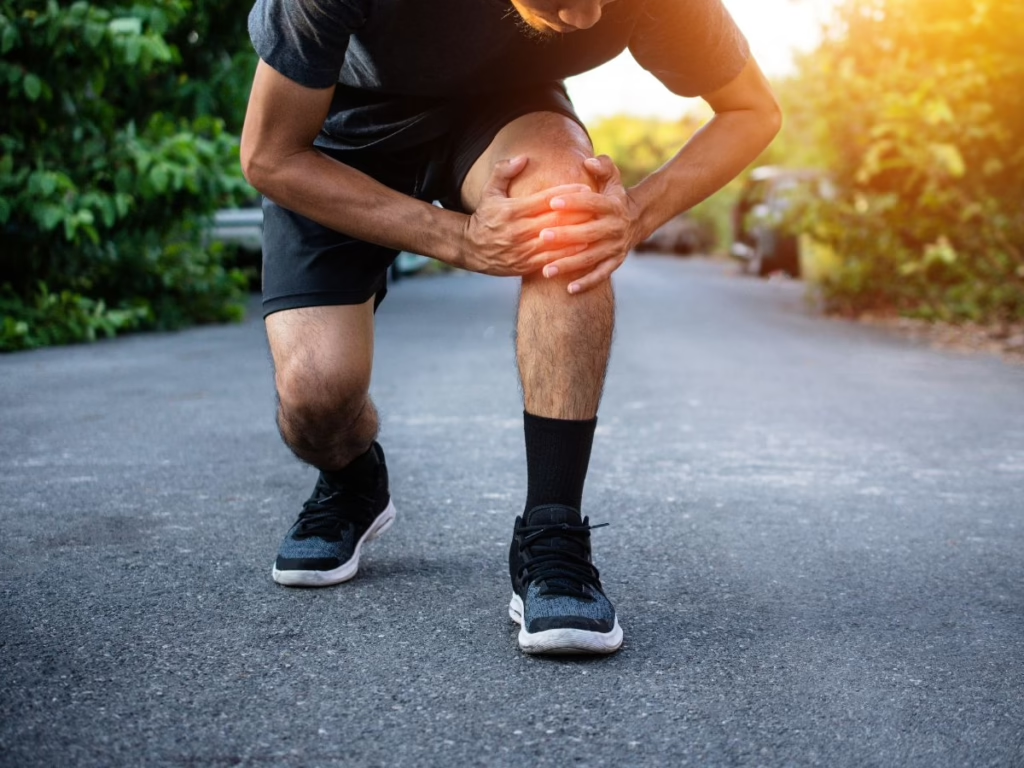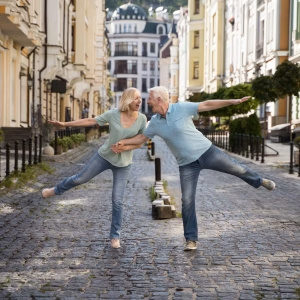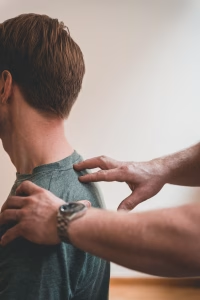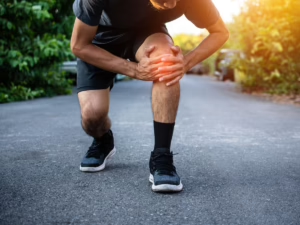Osteopathy for knee pain is a common solution for people of all ages and lifestyles in Warrnambool and beyond. Whether it’s caused by an injury, overuse, or a degenerative condition like osteoarthritis, knee pain can make even simple activities—like walking, climbing stairs, or bending down—difficult and frustrating. Whether it’s caused by an injury, overuse, or a degenerative condition like osteoarthritis, knee pain can make even simple activities—like walking, climbing stairs, or bending down—difficult and frustrating. As one of the largest weight-bearing joints in the body, the knee plays a critical role in mobility, stability, and overall movement. When knee pain occurs, it often impacts other areas of the body, such as the hips, lower back, and ankles, leading to further discomfort and imbalance.
For residents in Warrnambool seeking an effective, non-invasive solution, osteopathy for knee pain offers a holistic approach. Osteopathy focuses on treating the body as a whole, identifying the root causes of pain and dysfunction rather than just addressing the symptoms. By restoring balance and alignment, osteopathy can help alleviate knee pain, improve function, and prevent further issues. In this blog, we’ll explore the anatomy of the knee, common causes of knee pain, osteopathic treatment options, and practical tips for managing and preventing knee discomfort tailored for the Warrnambool community.
Understanding the Anatomy of the Knee with Warrnambool Osteopaths
The knee is one of the most complex joints in the body. It connects the thigh bone (femur) to the shin bone (tibia) and allows for bending, straightening, and weight-bearing movements. The key structures of the knee include:
- Bones: The knee joint involves the femur, tibia, and patella (kneecap), which work together to support movement and weight distribution.
- Ligaments: The anterior cruciate ligament (ACL), posterior cruciate ligament (PCL), medial collateral ligament (MCL), and lateral collateral ligament (LCL) provide stability and prevent excessive movement of the joint.
- Meniscus: Two C-shaped cartilage discs act as shock absorbers between the femur and tibia, cushioning the joint and helping distribute weight evenly.
- Muscles and Tendons: The quadriceps and hamstrings are the primary muscles that control knee movement. Tendons, like the patellar tendon, connect muscles to bones, allowing for smooth and coordinated motion.
- Bursae: Small fluid-filled sacs reduce friction between tissues, ensuring the joint moves without pain or irritation.
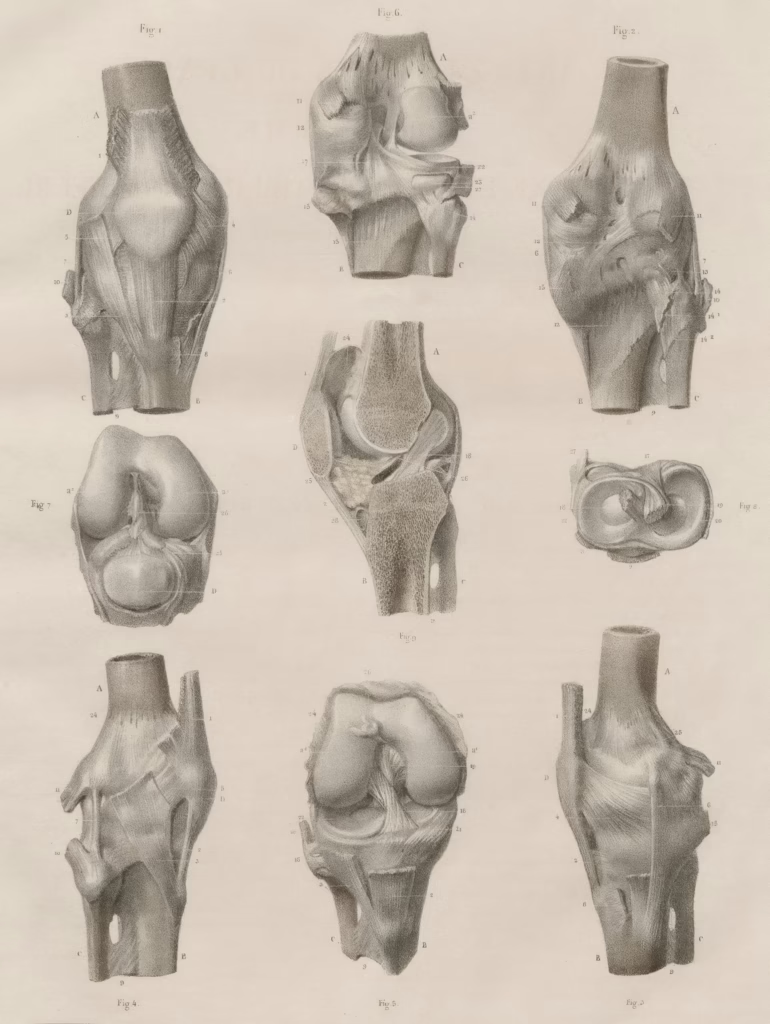
The knee works closely with the hips, ankles, and lower back to facilitate balance and movement. This interconnectedness highlights the importance of assessing the body as a whole to identify and address the underlying causes of knee pain. For instance, misalignment or weakness in the hips can alter weight distribution, leading to compensatory patterns in the knee. Similarly, issues in the lower back or ankles may shift biomechanical stresses, intensifying discomfort in the knee. Our Warrnambool osteopaths use a holistic approach, carefully evaluating these relationships to ensure that treatment not only alleviates knee pain but also promotes overall stability and balance across the entire kinetic chain. By addressing the root causes, this comprehensive care approach helps prevent recurring issues and enhances long-term mobility and function.
Additionally, the knee’s reliance on a healthy balance of strength, flexibility, and alignment emphasizes the need for integrative care. Ensuring that each component—from bones to muscles—functions harmoniously supports not only pain relief but also optimal performance in daily activities and sports. This underscores osteopathy’s commitment to treating the entire system rather than isolating the problem.
Common Causes of Knee Pain in Warrnambool
Knee pain can result from a variety of conditions, including:
- Osteoarthritis: A degenerative condition that causes the cartilage in the knee joint to wear down, leading to pain, stiffness, and reduced mobility.
- Patellar Tendonitis: Often called “jumper’s knee,” this condition involves inflammation of the patellar tendon due to repetitive stress, especially in athletes.
- Ligament Injuries: Sprains or tears of the ACL, MCL, or other ligaments can occur during sports, sudden stops, or twisting motions.
- Meniscus Tears: Injuries to the meniscus, often caused by twisting or heavy lifting, can lead to pain, swelling, and a feeling of instability.
- Bursitis: Inflammation of the bursae can result from repetitive kneeling, overuse, or trauma, causing pain and tenderness around the knee.
- Referred Pain: Sometimes, knee pain originates from issues in other parts of the body, such as the hips, pelvis, or lower back. Addressing these areas is essential for long-term relief.
Understanding the cause of knee pain is key to determining the most effective treatment and preventing future issues. This understanding enables osteopaths to craft tailored care plans that focus on both immediate relief and sustained well-being. By delving into the root causes, practitioners ensure a comprehensive strategy that mitigates pain while fostering resilience and functionality.
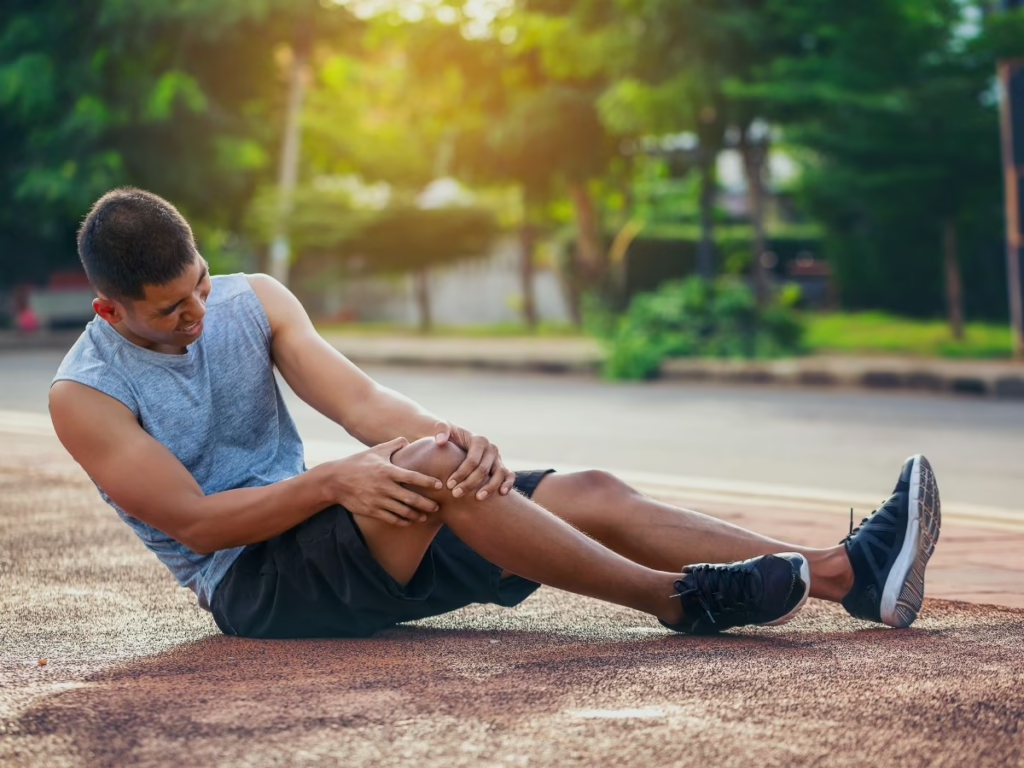
Knee Pain Through an Osteopathic Lens in Warrnambool
Osteopathy offers a unique perspective on knee pain by considering how the entire body functions together. Rather than focusing solely on the knee joint, osteopaths assess surrounding structures, such as the hips, ankles, and spine, to identify imbalances or dysfunctions that may contribute to pain.
Key Osteopathic Techniques for Knee Pain
- Soft Tissue Techniques: These include gentle massage and stretching to release muscle tension, improve circulation, and reduce inflammation around the knee. These techniques also enhance the elasticity of tissues, promoting a more fluid range of motion.
- Joint Mobilization: Gentle manipulation techniques are used to improve mobility, restore alignment, and relieve stiffness in the knee joint and surrounding areas. This fosters smoother interactions between the joint’s components, reducing wear and tear.
- Postural and Biomechanical Correction: Osteopaths assess your posture, gait, and overall movement patterns to address imbalances and prevent undue stress on the knee. By correcting these factors, osteopathy prevents future injuries while improving performance in daily tasks.
- Myofascial Release: This technique targets the connective tissues surrounding the knee, helping to restore flexibility and reduce pain. It also addresses any adhesions or restrictions that could limit function.
- Exercise Prescription: Osteopaths may recommend specific strengthening and stretching exercises to support the knee and improve stability. Tailored to individual needs, these exercises empower patients to actively participate in their recovery.
By addressing the root causes of knee pain and promoting proper alignment, osteopathic treatment can provide lasting relief and help prevent future injuries. This integrated approach ensures that patients not only feel better but also gain the tools to maintain their well-being over the long term.
Practical Tips to Prevent and Manage Knee Pain in Warrnambool
In addition to osteopathic care, incorporating simple habits into your daily routine can help prevent and manage knee pain:
- Strengthen Key Muscles: Focus on exercises that strengthen the quadriceps, hamstrings, and glutes to support the knee joint. Adding core-strengthening exercises can further stabilize the entire body.
- Stretch Regularly: Gentle stretching of the muscles around the knee can improve flexibility and reduce stiffness. Stretching also promotes circulation, aiding recovery and maintaining joint health.
- Wear Proper Footwear: Supportive shoes or orthotics can help maintain alignment and reduce stress on the knees. Consider consulting with a specialist to find footwear that suits your activity level and foot structure.
- Maintain a Healthy Weight: Excess weight places additional strain on the knee joint, increasing the risk of pain and injury. Weight management supports overall joint health and reduces systemic inflammation.
- Avoid Overuse: Incorporate rest days into your routine and avoid repetitive movements that strain the knees. Balancing activity and recovery is key to preventing injuries.
- Use Proper Form: Whether exercising or lifting heavy objects, maintaining proper form can prevent unnecessary stress on the knees. Professional guidance from a trainer or therapist can be invaluable.
Implementing these tips can significantly enhance your quality of life while reducing the risk of knee discomfort.
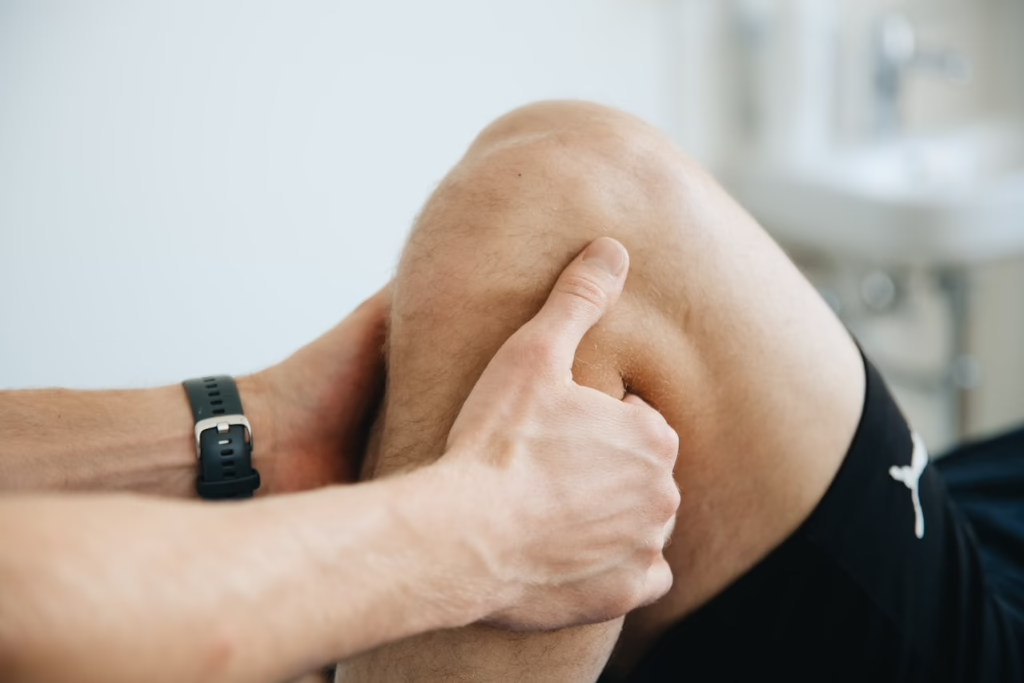
FAQs About Osteopathy for Knee Pain in Warrnambool
What are the most common causes of knee pain?
Knee pain often results from injuries, overuse, or conditions like osteoarthritis. Osteopaths can identify contributing factors and provide targeted treatments.
How does osteopathy help with knee pain?
Osteopathy addresses the root causes of knee pain through manual techniques, posture correction, and tailored exercises to restore balance and function.
Can osteopathy prevent knee surgery?
In some cases, osteopathy can reduce pain and improve mobility, potentially delaying or avoiding the need for surgery.
Is osteopathy safe for older adults with knee pain?
Yes, osteopathic treatment is gentle, non-invasive, and suitable for people of all ages, including older adults with arthritis or other joint conditions.
How many osteopathy sessions will I need?
The number of sessions depends on the severity of the pain and how your body responds to treatment. Many patients notice improvement within a few sessions.
Can osteopathy help with sports-related knee injuries?
Absolutely. Osteopaths are skilled in treating sports injuries, helping athletes recover and return to their activities safely.
Why choose Warrnambool for osteopathic care?
Warrnambool is home to experienced osteopaths who understand the unique needs of the local community, offering personalized care for long-term well-being.
Conclusion
Knee pain can limit your ability to move freely and enjoy daily life, but it doesn’t have to be a lasting burden. Osteopathy for knee pain offers a holistic approach to treatment, focusing on restoring balance, improving joint function, and addressing the root causes of discomfort. Whether you’re dealing with a sports injury, arthritis, or general wear and tear, osteopathy provides personalized care to help you regain strength and mobility.
Healthy, pain-free knees are essential for staying active and maintaining a high quality of life, and our osteopathy services in Warrnambool can help you achieve this goal. If knee pain is holding you back, take the first step towards relief today. Book a consultation with our Warrnambool osteopaths to discover how osteopathy can help you move with confidence and ease!
Reference List:
American Academy of Orthopaedic Surgeons. (2021). Management of osteoarthritis of the knee (non-arthroplasty): Clinical practice guideline. Retrieved from https://www.aaos.org/globalassets/quality-and-practice-resources/osteoarthritis-of-the-knee/oak3cpg.pdf
American College of Rheumatology. (2021). Osteoarthritis management: Updated guidelines from the American College of Rheumatology and Arthritis Foundation. American Family Physician, 103(2), 120-121. Retrieved from https://www.aafp.org/pubs/afp/issues/2021/0115/p120.html
Deyle, G. D., Allison, S. C., Matekel, R. L., Ryder, M. G., Stang, J. M., Gohdes, D. D., … & Garber, M. B. (2005). Physical therapy treatment effectiveness for osteoarthritis of the knee: A randomized comparison of supervised clinical exercise and manual therapy procedures versus a home exercise program. Physical Therapy, 85(12), 1301-1317. Retrieved from https://academic.oup.com/ptj/article/85/12/1301/2805056
Hochberg, M. C., Altman, R. D., April, K. T., Benkhalti, M., Guyatt, G., McGowan, J., … & Tugwell, P. (2012). American College of Rheumatology 2012 recommendations for the use of nonpharmacologic and pharmacologic therapies in osteoarthritis of the hand, hip, and knee. Arthritis Care & Research, 64(4), 465-474. Retrieved from https://www.rheumatology.org/Portals/0/Files/Osteoarthritis-Guideline-2012.pdf
Kirschenbaum, I. (2021). An evidence-based approach to the treatment of knee osteoarthritis. The Journal of Orthopaedic Experience & Innovation. Retrieved from https://journaloei.scholasticahq.com/article/29155-an-evidence-based-approach-to-the-treatment-of-knee-osteoarthritis
McAlindon, T. E., Bannuru, R. R., Sullivan, M. C., Arden, N. K., Berenbaum, F., Bierma-Zeinstra, S. M., … & Underwood, M. (2014). OARSI guidelines for the non-surgical management of knee osteoarthritis. Osteoarthritis and Cartilage, 22(3), 363-388. Retrieved from https://oarsi.org/sites/oarsi/files/docs/2014/non_surgical_treatment_of_knee_oa_march_2014.pdf
National Institute for Health and Care Excellence. (2014). Osteoarthritis: Care and management in adults. (NICE Clinical Guideline CG177). Retrieved from https://www.nice.org.uk/guidance/cg177
O’Connor, F. (2015). Manual osteopathic management of knee pain secondary to musculoskeletal injury. National Academy of Osteopathy. Retrieved from https://nationalacademyofosteopathy.com/wp-content/uploads/2019/12/OConnor-Fergus-FT-C150328.pdf
U.S. Department of Health and Human Services. (2020). Physical activity guidelines for Americans (2nd ed.). Retrieved from https://odphp.health.gov/sites/default/files/201909/Physical_Activity_Guidelines_2nd_edition.pdf
Zhang, W., Moskowitz, R. W., Nuki, G., Abramson, S., Altman, R. D., Arden, N., … & Tugwell, P. (2008). OARSI recommendations for the management of hip and knee osteoarthritis, Part II: OARSI evidence-based, expert consensus guidelines. Osteoarthritis and Cartilage, 16(2), 137-162. Retrieved from https://pubmed.ncbi.nlm.nih.gov/18279766/
